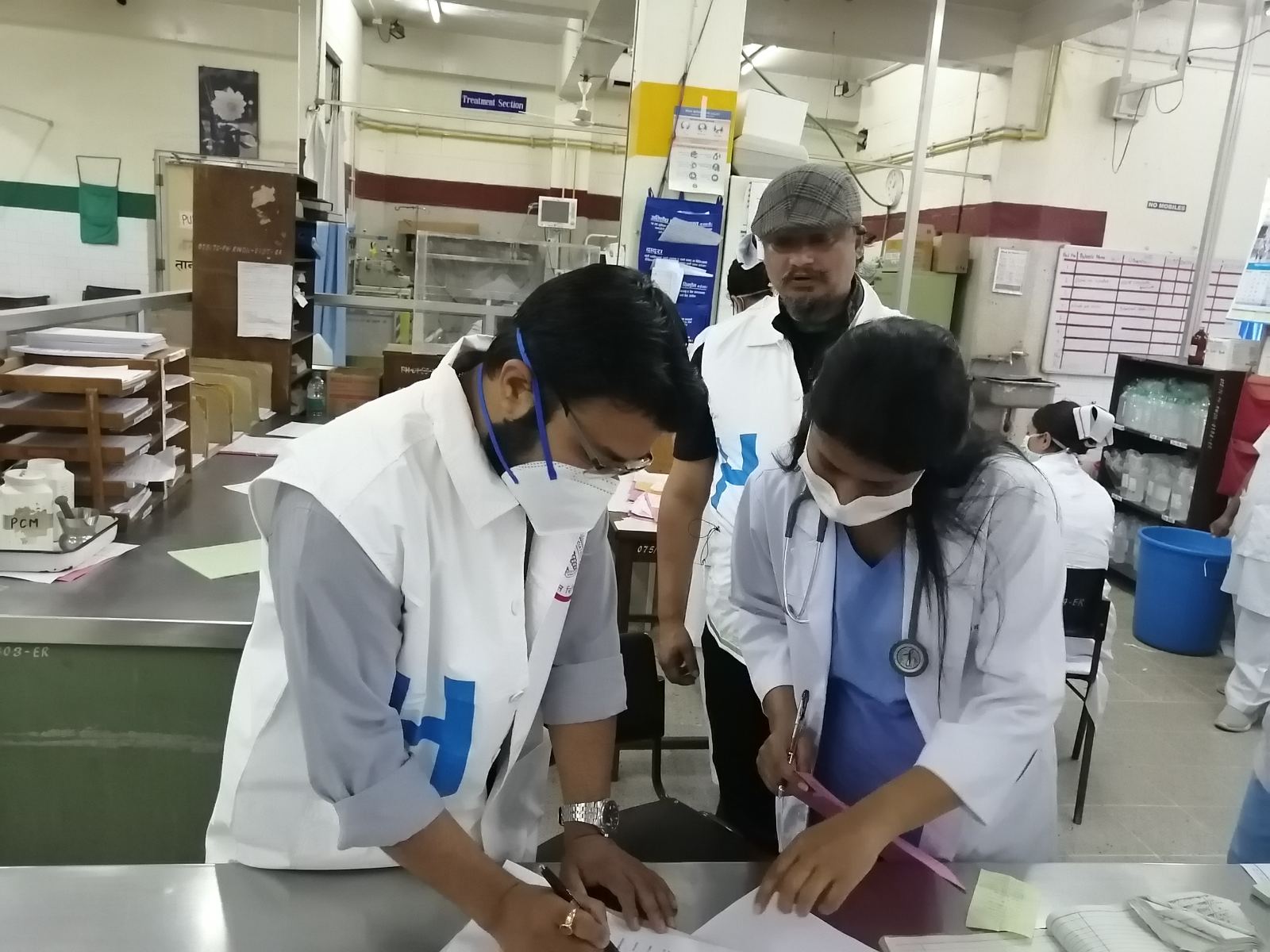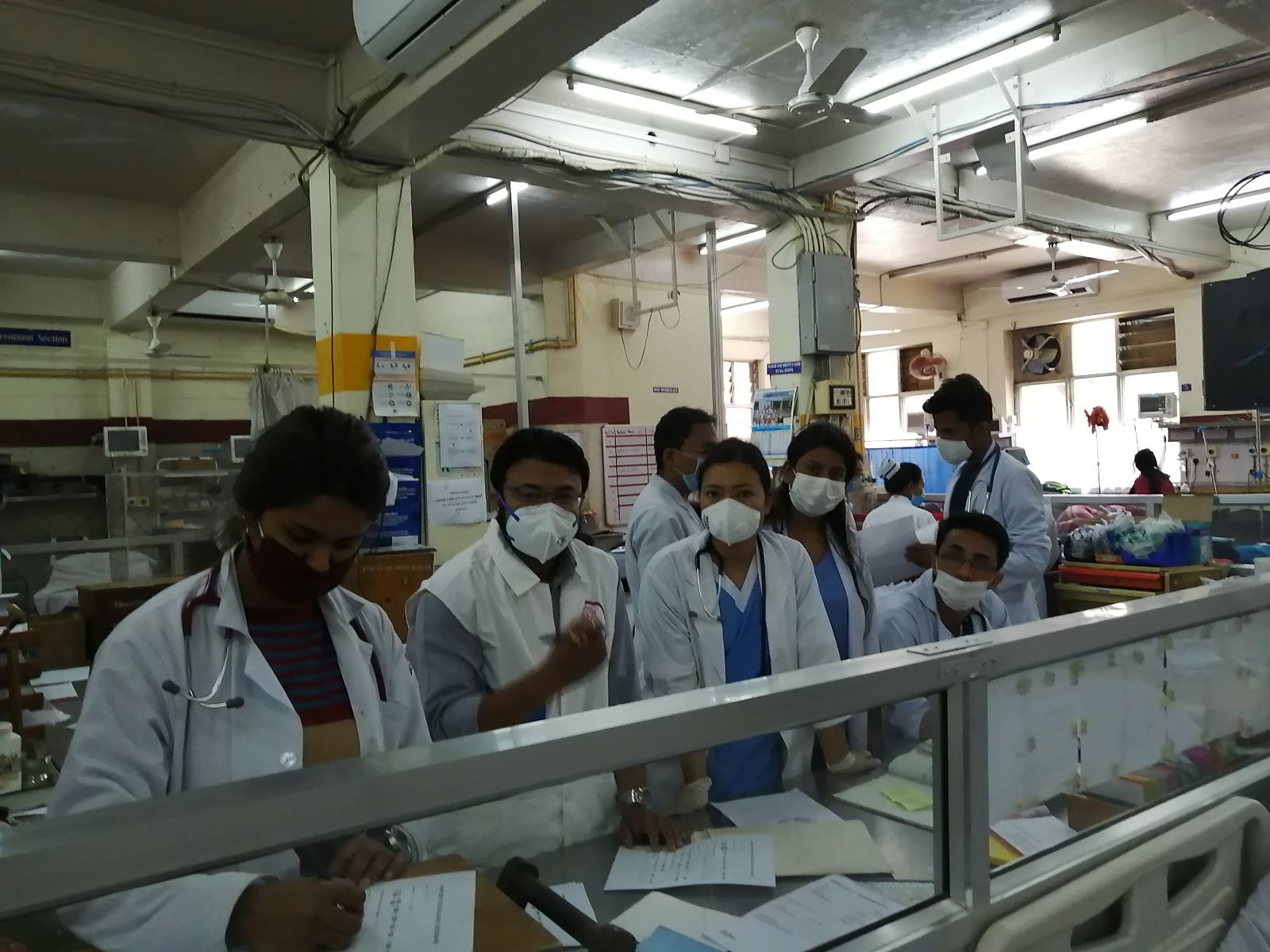Life & Health

Days after health officials detected the first case of highly contagious BA.5 omicron variant in Nepal, officials say, Covid cases are rising sharply, affecting people from all sections of the society including several frontline health workers.
Officials have yet to confirm if most cases are BA.5 omicron variant of the coronavirus, but the news follows revelation that the new variant entered Nepal in recent weeks and that it must be responsible for the sharp rise registered in recent days.
According to the Ministry of Health and Population (MOHP), among the 3,844 tests conducted in the last 24 hours 260 people tested positive for Covid-19. No new deaths were logged, but officials have advised everyone to take safety measures, stating that several health workers too had contracted the virus.
Health workers in isolation
As of Thursday, July 14, MOHP said, 14 health workers working in different hospitals in Kathmandu valley tested positive for Covid in the past two weeks. The sudden surge has already forced several of them to isolate themselves.
Five health professionals -- two doctors and three nurses working at Bir Hospital - are currently under home isolation after they tested positive for the infection. “They tested positive three-four days ago,” said Dr Bhupendra Basnet, director at Bir Hospital. “Now they have been cut off from duties.”
One of the physiotherapists at National Trauma Center, located next to Bir Hospital, is in isolation too, and has suffered from fever and is under home isolation, according to Dr Pramod Kumar Yadav, acting chief medical superintendent at the centre.
“We are afraid several more staff members may have been affected,” he told NepalMinute.
The Tribhuvan University Teaching Hospital (TUTH) isn’t spared either, where at least one doctor is in home isolation, according to Ram Bikram Adhikari, focal person for Covid treatment at TUTH.
The health care workers are worried that rising Covid infections among doctors and nurses could have an adverse effect on service delivery.
Bir’s Dr Basnet said: “With more doctors and nurses in home isolation, we are already facing a crunch of manpower. If the situation continues, we may not be able to serve our patients.”

Growing cases
A total of 40 cases of coronavirus were reported on July 4 across the country. There were only 348 active cases then. As of July 14, nationwide active cases have jumped to 1,171, posing a challenge to hospitals and health workers.
According to MOHP, 23 people are admitted in health centres across the country of which 14 are admitted in intensive care unit and one is given ventilator care as of July 14.
“People tested positive for the infection have fever and cough. Only a few of them have difficulty breathing. The patients too are not in need to take medical oxygen,” said Dr Khem Raj Bhusal, assistant professor, internal medicine at the TUTH.
“We are seeing more patients with fever and symptoms as in Covid,” said Dr Ravi Shakya, director at Patan Hospital. “The upward trend started last week and that continues.”
At Patan Hospital, he said, at least two health workers have tested positive.
Officials say the situation is no different in other cities around the country, where hospitals are seeing a sharp rise in the number of patients with fever, cough and body ache. Yet most hospitals are yet to devise a work plan to prevent further spread of the infection.
During earlier waves of coronavirus, most hospitals in the country formed teams that worked in different shifts.
“We are looking into the cases. If the cases among the staff members increases further we will work with the same plan of working in shifts forming different groups and in alternatives,” said Dr Yadav.
The health care workers themselves are adopting preventive measures to keep the contagion at bay. “We should take precautions like wearing a mask, washing hands frequently and stay off from the crowded areas,” said Dr Basnet.
Health workers at risk
|
Province wise health workers data till July 13, 2022 |
||
|
Province |
Case |
Death |
|
Province 1 |
1601 |
5 |
|
Madhesh Province |
607 |
11 |
|
Bagmati Province |
6970 |
14 |
|
Gandaki Province |
496 |
1 |
|
Lumbini Province |
910 |
8 |
|
Karnali Province |
323 |
2 |
|
Sudurpaschim Province |
283 |
2 |
|
Total |
11190 |
43 |
Shortage of enough medical workers during the pandemic could cost more as Nepal has already lost 43 health care workers since the pandemic began in the country in January 2020.
The government of Nepal hired healthcare workers in contracts when the cases of coronavirus ascended during the first wave. Further, it also provided incentives to frontline workers.
Cases likely to increase
Health officials are projecting that Covid cases could go further up in the days to come.
“If a large-scale test is done in the community then a large number of cases of infection will be detected,” said Dr Janak Koirala, professor of infectious disease at Patan Hospital. “The government must immediately conduct surveillance in the community to ascertain the situation.”
The number of people infected with coronavirus is comparatively higher among the people aged 21-30 and 31-40. As per MOHP reports, 43 people in the age group 21-30 and 53 people in the age group 31-40 tested positive of the infection in the last 24 hours on July 14.
“It is because this is a mobile population, people in this age group remain active, move around, ride public transport, visit restaurants and other crowded areas,” said Dr Koirala.
BA.5 omicron variant
Health officials and doctors suspect the current rise may have a direct correlation with the BA.5 omicron variant.
“The rise in the number of cases is because of the spread of the new strain of the virus,” said Dr Sher Bahadur Pun, clinical research unit chief at Sukraraj Tropical and Infectious Disease Hospital, Teku.
The sub-variant BA.5 of Omicron was first detected in South Africa in February 2022. It took several months to get to Nepal, where it was detected in the first week of July.

_11zon1681280198.jpg)




